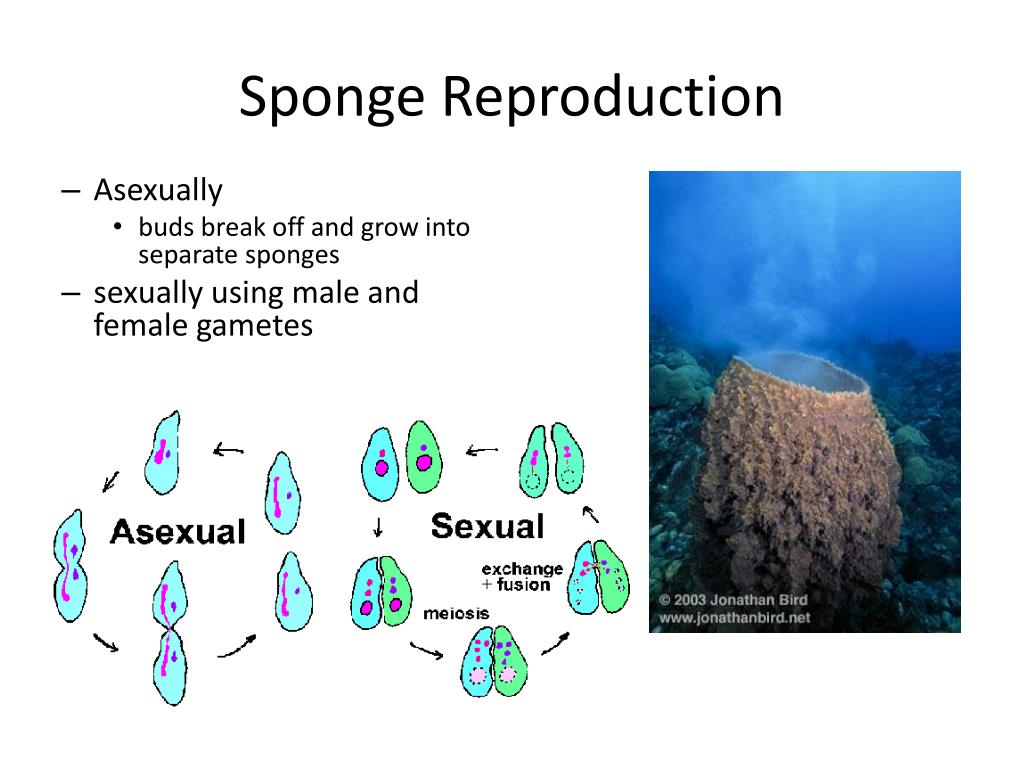


Sponges capture food (detritus particles, plankton, bacteria) that is brought close by water currents created by the choanocytes. Skeletal elements, choanocytes, and other cells are imbedded in a gelatinous matrix called mesohyl or mesoglea.

They are supported by a skeleton made up of the protein collagen and spicules, which may be calcareous or siliceous, depending on the group of sponges examined. Sponges are either radially symmetrical or asymmetrical. Water movement is driven by the beating of flagellae, which are located on specialized cells called choanocytes (collar cells). Other characteristics of sponges include a system of pores (also called ostia) and canals, through which water passes. This is the simplest kind of cellular organization found among parazoans. Sponges have cellular-level organization, meaning that that their cells are specialized so that different cells perform different functions, but similar cells are not organized into tissues and bodies are a sort of loose aggregation of different kinds of cells. Sponges are primarily marine, but around 150 species live in fresh water. Sponges are a diverse group of sometimes common types, with about 5000 species known across the world.


 0 kommentar(er)
0 kommentar(er)
